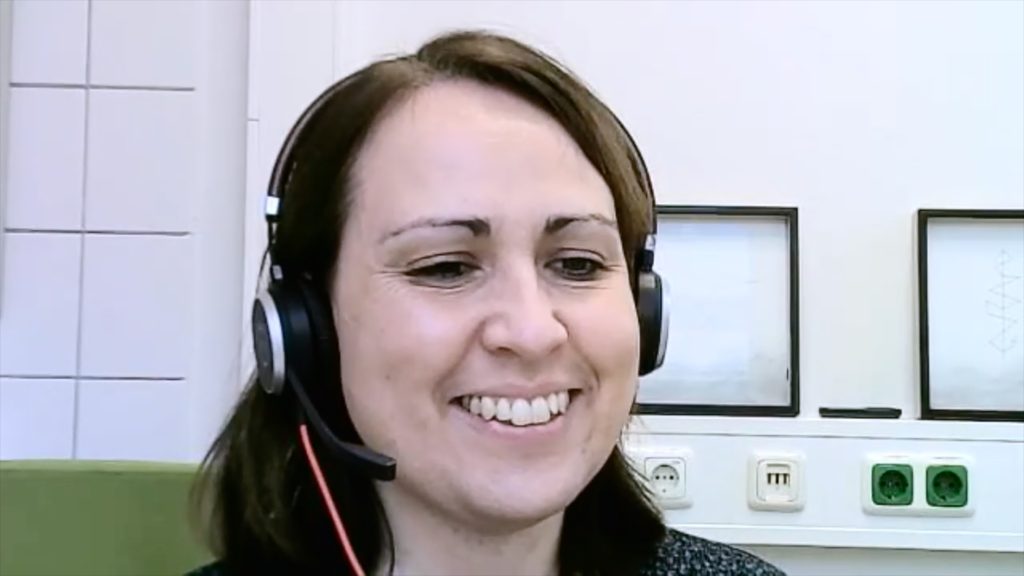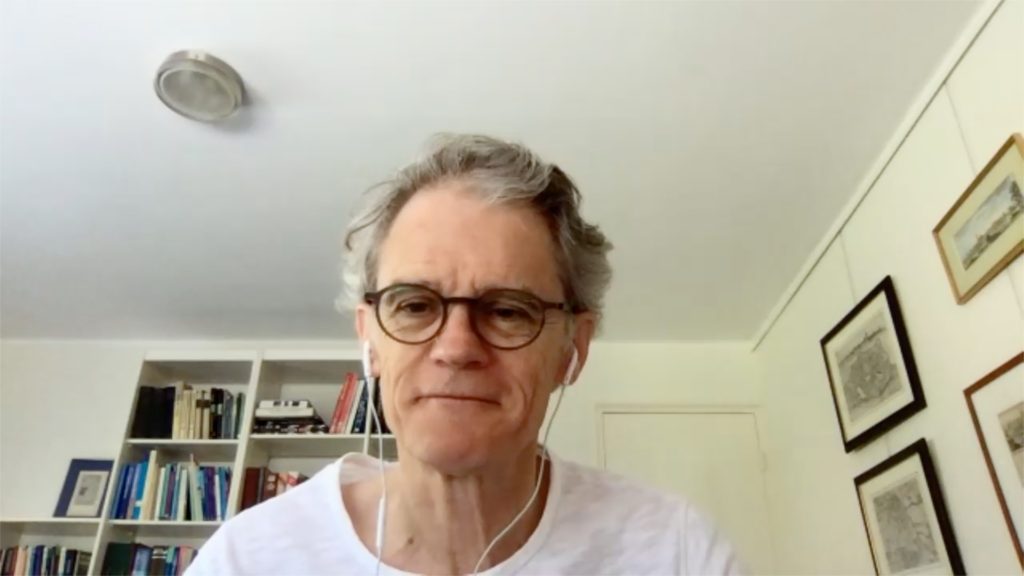touchIMMUNOLOGY coverage of data presented at EULAR 2024:
IL-17A is considered to be an important cytokine in the pathobiology of psoriatic arthritis (PsA). At EULAR 24, results from the phase 2/3 study investigating the selective IL-17A inhibitor, izokibep, in PsA were reported as part of the late-breaking abstracts session.
To understand what sets izokibep apart from other IL-17 inhibitors and its potential for treating PsA, we spoke with one of the study’s investigators, Prof. Peter Taylor (University of Oxford, Oxford, UK). Prof. Taylor begins by discussing the study’s aims and design before focusing on the trial’s findings, highlighting its efficacy and tolerability. He then concludes by exploring how izokibep could fit into the current treatment paradigm and the importance of ongoing research to fully determine its risk-benefit ratio and optimal dosage.
Questions:
- What is the rationale for inhibiting IL-17, particularly IL-17A alone, in the treatment of psoriatic arthritis? (0:12)
- Could you briefly describe izokibep and its mechanism of action? (1:00)
- What were the aims and design of the phase 2b/3 study investigating izokibep in patients with psoriatic arthritis? (2:04)
- What did the data show in terms of the efficacy? (2:57)
- What were the safety findings from the study? (6:07)
- How might izokibep fit into current treatment paradigms? (8:34)
Associated Abstract:
Mease P, et al. Efficacy and Safety of Izokibep, a Novel IL-17A Inhibitor, in Patients with Active Psoriatic Arthritis: Week 16 Results from a Randomized, Double-Blind, Placebo-Controlled, Multicenter Phase 2b/3 Study. EULAR 24. Abstract LBA0005
Disclosures: Prof. Peter Taylor discloses acting as a consultant for AbbVie, Acelryn, AnaptysBio, Biogen, Fresenius, Galapagos, Gilead, Immunovant, Janssen, Lilly, Moonlake, Nordic Pharma, Pfizer, Sanofi, and UCB; and receiving grant/research support from Galapagos (AlfaSigma).
This content has been developed independently by Touch Medical Media for touchIMMUNOLOGY and is not affiliated with EULAR. Unapproved products or unapproved uses of approved products may be discussed by the faculty; these situations may reflect the approval status in one or more jurisdictions. No endorsement of unapproved products or unapproved uses is either made or implied by mention of these products or uses by Touch Medical Media or any sponsor. Views expressed are the speaker’s own and do not necessarily reflect the views of Touch Medical Media.
Transcript:
Hello. My name’s Peter Taylor, Professor of Musculoskeletal Sciences at the University of Oxford.
Well, it’s long been known that among many cytokines important in the pathology of skin psoriasis and psoriatic arthritis, the IL-17 and IL-23 axis is particularly important. And there’s abundant evidence for the importance of IL-17A because we have several approved biologics which actually target IL-17A. And more recently, we’ve had some that target both IL17A and IL-17F. And in fact, there are several isoforms within the IL-17 family. But the belief is that the predominantly important cytokine in the IL-17 family, in the pathology of psoriatic arthritis, is IL-17A.
Izokibep is a unique small protein therapeutic. So it is a biologic. It blocks IL-17A with a very-high affinity of point three picomoles, and it’s one tenth the size of a monoclonal antibody. It’s only 18.6 kilodaltons. And potentially, this enables izokibep to reach tissues that might be difficult to access by verylarge monoclonal antibodies. At least that’s the theory, and that’s one of the reasons for doing the studies to actually test this hypothesis. Izokibep comprises two IL-17A binding domains, and this means that they can, as it were, wrap around IL-17A homodimers and very, very firmly grasp it. But there is also an albumin binding domain, and this extends the plasma half-life of the molecule and potentially may enhance its targeting to sites of information.
At EULAR in 2024, my colleagues and I reported the findings of the phase 2b study. And in this study, there’s a three-arm, parallel arm study in which two doses of izokibep, a 160 milligrams every week, and izokibep, 160 milligrams once every two weeks, was compared with placebo. And the placebo was administered on a weekly basis. And the primary endpoints was at week 16. It was ACR50, and other endpoints included PASI90, enthesitis resolution, minimal disease activity, ACR20, PsAID 9, HAQ, and PASI100, and so on, and also, of course, safety measurements. And it was the 16 week data that was reported at EULAR.
Well, to summarize some of the data, there were 351 patients randomized. So just over 100 patients in each of the three assignment arms. They were well matched, for baseline demographics and characteristics, and, of course, they they had active disease at baseline. And just to summarize some of the key highlights, that in fact, ACR50 responses were achieved as early as week four by the izokibep treatment arms. And the once weekly dose, in fact, had 40 percent of patients at week 16, and the every two-week dose had 43 percent of patients at week 16 achieving this high endpoint of ACR50. That compared with 15 percent of patients on placebo treatment.
If we move on to some of the other endpoints, we’ve just described the primary endpoint. But in fact, about one in four patients treated with izokibep achieved ACR70 responses at week 16. So these are are, I think, exciting results. And in fact, half the patients treated with izokibep achieved skin clearance, PASI100 at week 16. And if we now look at multi-domains and multi-domain efficacy in terms of minimal-disease activity, over 40 percent of the patients treated with izokibep actually achieved a minimal-disease activity at week 16.
And I’m just going to move on to another endpoint, which was for enthesitis. Now, looking at enthesitis, there was a complete resolution of enthesitis at week 16 in a large proportion of patients.
So in the pre-specified analysis, enthesitis resolution, in patients with baseline leads enthesitis index greater than zero, we had between 45 to 56 percent of patients. But if in fact we looked on a post-hoc analysis, at those patients who at baseline had more severe enthesitis with a Leeds Enthesitis Index of five to six, 50 percent of the patients on the every two-week dose of izokibep, 22 percent on the weekly dose, actually achieved this hurdle, whereas only 12 percent of patients on placebo achieved it. But I should emphasize the numbers become small when you look at those with with higher baseline degrees of emphyseitis.
Looking at the PsAID, if you look at the improvement in, patients of at least three units with baseline PsAID, greater than three, we have between 38 to 42 percent of patients on izokibep compared to just 12 percent on placebo. And similarly, HAQ-DI with a minimal clinically important difference, was achieved and greater for the izokibep than was the case for placebo.
The majority of injection site reactions are mild to moderate. There were no cases of suicidal ideation. There was one case of serious infection in the placebo arm, one case of a serious infection in the weekly izokibep 160 milligram arm, no cases in the 160 milligrams every two weeks. In terms of candidiasis, which is an area of interest in this particular therapeutic target, and where there seem to be more cases where IL-17F is being inhibited as well as IL-17A. In the, case of izokibep, there was one case of oral candidiasis, non-serious in the every-week treatment arm. There was one case of skin candidiasis in the placebo arm, but no cases of skin candidiasis in either of the izokibep treatment arms. And there was one case of ulcerative colitis in the izokibep arm, and that was in a patient who, in fact, seems to have had some pre-existing ulcerative colitis prior to enrollment.
So, so far, the safety looks very much in line with what one would expect from this class of treatments. At this stage of the game, it’s looking at a favorable end of the spectrum. So we can conclude that highly potent and selective inhibition of IL-17A by izokibep in patients with active psoriatic arthritis resulted in early improvements in disease activity across multiple domains as just described. And in addition to meeting the primary endpoint of ACR at week 16, a substantial proportion of patients went on to achieve responses for the high hurdle endpoints of ACR50, PASI90, PASI100, and minimal disease activity. And we found it to be well-tolerated with a safety profile that’s generally consistent with other IL-17 inhibitors.
So, it seems that this drug has a potential impact, in this condition. It appears to be safe and has the potential to offer deep, clinical efficacy across multiple domains. And that’s why there are further ongoing studies and particularly to look at a wider range of doses, to see if we can really get the optimum risk-benefit ratio for treatment, targeting IL-17A.
This is a very difficult question to ask as to how a drug like this may fit into the treatment paradigm because, of course, we already have several approved anti-IL-17 agents, some of which target just A, some will have an effect on IL-17A/F, heterodimers, and some will also target IL-17F. And so if there are new agents that come in, I think the the way in which they might fit into the treatment paradigm is, of course, going to depend on their cost-effectiveness, but on their overall risk-benefit ratio. And at this point, I think the most honest answer is we need to watch this space.
There are other agents also in trial, I should add, which also have promising data. So always when new therapeutics within a broad class come to the clinic and come to approval, should they be approved, what physicians will look at is what is the added value, if anything, that these drugs bring. What’s the overall risk benefit ratio? And, of course, that the cost-effectiveness issue will have a a bearing on how the drug is used in the clinic.
Interviewer/Editor: Gina Furnival
Cite: Taylor P. Efficacy and safety of izokibep: an investigational IL-17A inhibitor. touchIMMUNOLOGY, July 25 2024.













